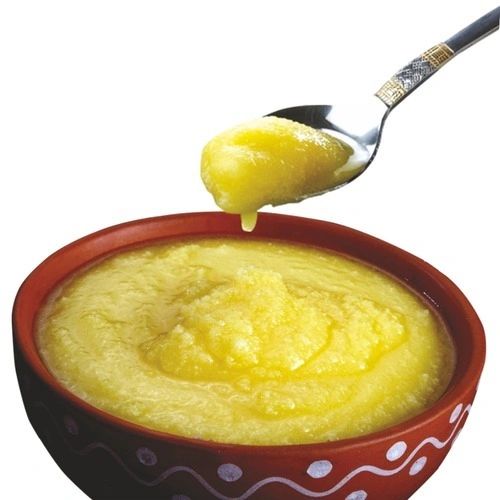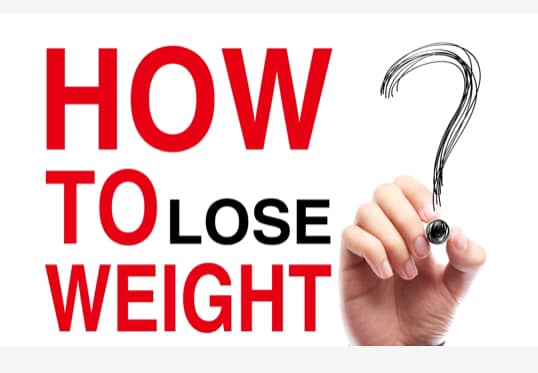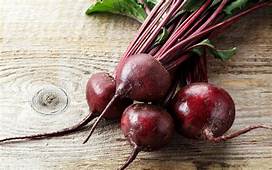
Suffering From Thyroid Disorders

Any doctor can tell you that to handle thyroid disease, you need a suitable dose of thyroid hormone to replace what your body isn’t currently making on its own, or that you may need other forms of medications to control the excess. However, it may also be worthwhile to consider that making lifestyle changes can be just as significant as these. Most patients are not even aware that what’s the reason for their under active or over active thyroid function. Find out the root cause of your thyroid disease whether it’s an autoimmune condition. This condition is called autoimmune thyroiditis, chronic lymphocytic thyroiditis, Hashimoto’s thyroiditis, or Hashimoto’s disease. It is extremely important to have a lifestyle which controls stress and provides appropriate nutrition and fitness. If you’re not feeling well despite following your thyroid disease treatment regimen as recommended by a healthcare professional, try lifestyle and diet related changes from our experts. So many patients have been helped weaning off from their thyroid medications.
Is Ghee (Clarified Butter) Good for Health ?

Is Ghee Good for your Health? Ghee is a source of saturated fats. And the role, saturated fats have to play when it comes to cardiovascular diseases is a continuing topic of debate among health experts. However, the human body cannot function without any saturated fats either. While an excessive amount of saturated fats is unhealthy, it is essential in limited quantities. Saturated fats and proper brain functioning are closely related. So while ghee does contain saturated fats, using a limited amount of ghee can both enhance the flavor of the food and deliver essential fats to the body. What this shows is that most normal people will experience, little to no health problems from consuming ghee. However, this may not hold for people who are already predisposed to certain hereditary diseases like heart diseases. This predisposition can result from genetic factors or other factors.
6 Health Benefits of Ghee You Should Know
Ghee is not just an ingredient used in cooking, but a part of India’s heritage in traditional medicine – the Ayurvedic tradition of healing. In ancient times, ghee was considered to be food sacred to the Gods. And this was how ghee started finding use in everything from lighting lamps, to being used in religious rituals, to being consumed as a health supplement. As it turns out, ghee has a lot to offer health wise:
1. Positively affects the nervous system : Ghee positively affects not just the central nervous system in the brain, but also the enteric nervous system in the gut. Ghee contains many vitamins and minerals that regulate and repair the gut lining which in turn is important for brain health as well.
2. Rich source of Butyric acid : Ghee is a rich source of butyric acid. Butyric acid is a kind of short-chain fatty acid that improves and supports probiotic bacteria that is present in the stomach. Ghee also has additional benefits, such as balancing the amount of hydrochloric acid present in the stomach and assisting the production of bile in the liver. It helps to regulate our bowel movement.
3. Rich in Omega 3 fatty acids: These are also known as essential fatty acids that the body cannot make and need to be supplied through food. Ghee is rich in DHA, a type of omega 3 fatty acid, which has been linked to brain development, reducing inflammation, slowing down the aging process, and many more functions.
4. Important source of fat-soluble Vitamins: Ghee is a rich source of important fat-soluble vitamins like vitamins A, E, K2, and D. The body absorbs fat-soluble vitamins best when a person eats them with higher-fat foods like ghee. These vitamins have many functions like improving immunity, good vision, and good antioxidant effects.
5. Conjugated linoleic acid Also known as CLA, :this acid is known for its ability to reduce tumors in the body, lower the amount of blood cholesterol, and improve and stabilize blood pressure. Ghee is a good source of CLA. 6. Powerful antioxidant abilities. The presence of vitamin E provides ghee with powerful antioxidant abilities. Ghee is also known to be good for the skin, as well as the hair. People don’t just consume ghee, but use it to make homemade face masks, hair masks, and more. As ghee retains its structural integrity at very high cooking temperatures, it becomes a great ingredient to be used in dishes that involve frying, sauteing, and other techniques that involve cooking on high heat. Ghee is both a popular source of essential nutrients, as well as an important flavoring ingredient in many contemporary dishes. How to make ghee at home• boil and cool milk overnight• remove milk cream (malai) in container and add 1 tsp curd. collect for 3-4 days• churn into white butter and remove the buttermilk(it can be consumed with salt and roasted cumin seeds)• heat the butter on slow flame and remove from gas when you see bubbles. The khoya or residue should be golden brown in color.• Strain the ghee and store in a glass or steel container.. Avoid re heating of ghee and to avail its health benefits add raw ghee to your pulses, roti , and rice.
What are you feeding your Skin ?

One of the main ways your body acquires nutrients, other than eating, is trans dermally— through the skin. Your skin is your largest organ—22 square feet on average—and 60 percent of the substances you put on it are eventually absorbed into the bloodstream. This semipermeable membrane allows us to absorb vitamins and minerals, but, unfortunately, it absorbs harmful chemicals we put on it, too. Chemicals in common soaps are no joke. They can disrupt our hormones, promote allergies, lead to reproductive issues and increase risk of some cancers. With serious side effects like these, we need to be particular about what we put on our skin. *Fragrance* Bottom line: If the ingredient is vague, it’s probably hiding something. “Fragrance”could actually be a cocktail of chemicals and you’d never know it. The FDA doesn’t require companies to disclose the breakdown of a fragrance’s ingredients to consumers because the chemicals that produce fragrance are considered “trade secrets.” Most of the time, synthetic chemicals and cancer-causing toxins (like phthalates, used to make fragrances last longer) are hiding under that one sneaky term. Constant exposure to fragrances has been shown to negatively impact the central nervous system and can trigger allergies, migraines and asthma symptoms. *Parabens* These ingredients are estrogen mimickers—meaning that once applied to the skin, they enter the bloodstream, and the body mistakes them for estrogen. When the body thinks there is an abnormally high amount of estrogen present in the bloodstream due to the presence of these hormone disrupters, it reacts in various ways: decreasing muscle mass, increasing fat deposits, causing early onset of puberty and spurring reproductive difficulties in both men and women. *Sulfates* These chemicals are used to produce lather and bubbles in soap. Some common sulfates are SLS (sodium lauryl sulfate) and SLES (sodium laureth sulfate). Sulfates strip the skin of its natural oils and increase penetration of the skin’s surface. They are also irritants for people with sensitive skin or eczema. *Triclosan* This chemical is most often found in antibacterial soap. Recent studies have found that triclosan actually promotes the emergence and growth of bacteria resistant to antibiotic cleansers. It also creates dioxin, a carcinogen that has been found in high levels in human breast milk. Dioxins have disruptive effects on the endocrine system and negatively affect thyroid functions.
You are not losing weight ? Here’s why …

According to a Harvard-trained doctor, keto will NEVER help you shed stubborn belly flab… IF any of your 5 fat-loss hormones are out of balance. And it doesn’t matter how few carbs you eat, how much you exercise, or how many supplements you take. That’s the bad news…The good news is… when you bring these 5 fat-loss hormones back into balance, it really doesn’t matter what diet you try. Your body can’t help but melt the fat off your tummy, butt, and upper arms. Even better? There’s a quick, at-home way to rebalance all 5 of these hormones. It takes just 30 seconds a day. And you could see the stubborn rolls start melting off before your eyes!
Do not underestimate the power of Walking

Aging starts from the feet upward. For both old and young, during two weeks of inactivity, the legs muscle strength can weaken by a third which is equivalent to 20-30 years of ageing. Strong bones, strong muscles, and flexible joints form the “Iron Triangle” that carries the most important load on the human body. The largest and strongest joints and bones of the human body are in the legs. The whole body weight/load remains and rests on the legs. As a person gets older, the accuracy and speed of transmission of instructions between the brain and the legs decreases, unlike when a person is young. Interestingly, 50% of a person’s bones and 50% of the muscles are in the two legs. Both the legs together have 50% of the nerves of the human body, 50% of the blood vessels and 50% of the blood flowing through them. It is the large circulatory network that connects the body. As our leg muscles weaken, it will take a long time to recover, even if we do rehabilitation and exercises, later. In addition, the so-called Bone Fertilizer Calcium will sooner or later be lost with the passage of time, making the elderly more prone to bone fractures. Bone fractures in the elderly can easily trigger a series of complications, especially fatal diseases such as brain thrombosis. Only by strengthening the legs, one can prevent further aging. Exercising the legs is never too late, even after the age of 60 years. The foot is the center of body locomotion, a kind of pillar, bearing the weight of the human body. 70% of human activity and burning of energy in one’s life is done by the two feet. Only when the feet are healthy then the convection current of blood flows smoothly, so people who have strong leg muscles will definitely have a strong heart. Although our feet/legs will gradually age with time, exercising our feet/legs is a life-long task. Please walk for at least 30-40 minutes daily to ensure that your legs receive sufficient exercise and to ensure that your leg muscles remain healthy.
The Beetroot Test

- I love beetroot, in every form but not many find this a vegetable of interest. It has a crisp but sweet taste when raw and it’s all sweet and mushy after it’s boiled. It is the best non-toxic food color that you can use to liven the look of your dishes, to a bright magenta pink. This color gives us an easy way to see if our liver is functioning well and our digestion is up to the mark. Within 24 hours of eating this veggie, the stool should have a slight reddish variant and the urine should be pale pink. If it takes longer than that it means that your body is not processing food well and effective digestion isn’t taking place. Beetroot is a power-packed vegetable. An excellent source of Potassium, manganese, phosphorous, calcium, B vitamins, and loads of Anti-oxidant phytonutrients. It is also a source of fiber both soluble and insoluble. Having a high nutritive value of folate, it is an essential source of nutrients during pregnancy. Being high in antioxidants, it helps in combating free radicals and hence is an effective cancer-protective. Betalain, a phytonutrient present in large quantities helps in reducing inflammation. Consumption of beetroot also helps in lowering blood sugar and high blood pressure. With so many health benefits, the beetroot magic, this taproot can be termed a superfood indeed. Negligible fat and low calorific count, it is a perfect salad ingredient. A perfect add on to dishes in its crisp grated structure when raw. It can be oven-baked into fries or added on into dishes to make them naturally sweet. Adding color to juices, it brightens them to an appetizing form for kids.
Antacids
Antacids Short-Term Relief = Long-Term Damage
Stomach acid is required for healthy digestion and to effectively absorb vitamins and minerals, so the long term use of acid blockers, which work by reducing acid production in the stomach, can severely decrease nutrient absorption, leading to nutrient deficiencies. PPI users have significantly lower levels of vitamin B12, iron, calcium, and magnesium. One study found that 75 percent of long-term PPIs users were deficient in vitamin B12, compared to only 11 percent of non-users. And in 2011, the FDA issued a warning that long-term use of acid-blocking medications can result in low magnesium levels. Likely related to the decrease in absorption of the important bone nutrients calcium and magnesium, long-term users of acid blockers also have a significantly higher risk of bone fractures, especially those of the hip and spine. Acid blockers can also lead to dangerous bacterial overgrowth in the gut, which can increase susceptibility to foodborne illnesses and infection. Finally, evidence has emerged showing that these drugs can also increase cardiovascular risk, in part by decreasing the body’s natural production of nitric oxide, which is crucial for cardiovascular health. Healthy Alternatives Heartburn hurts. When you’re suffering, you only want relief. The good news is that there are plenty of (effective!) alternatives to acid blockers—that don’t come with harmful side effects, even with long-term use. Herbs such as slippery elm, marshmallow root, aloe vera, and deglycyrrhizinated licorice (DGL) help soothe irritation and reduce inflammation in the esophagus and stomach caused by acid reflux by coating and protecting these sensitive tissues. These herbs soothe and encourage healing without reducing stomach acid production. While melatonin is most known for its role in supporting a normal circadian rhythm, research is finding that it also does an excellent job at relieving symptoms of acid reflux; not surprising, considering there is up to 400 times more melatonin in the gut than in the brain!

Goodbye to Insomnia !
I had written this blog years back, now sharing it on this website.
If you or your loved one is suffering from Insomnia, this post can help you.
Most adults have experienced Insomnia or sleeplessness at one time or another in their lives.
Causes are so many. Stress is only one amongst them. And Stress as we know is the most common factor of various problems.
Long working hours, no exercise rather no movement, sedentary lifestyle can attribute to so many diseases.
People often think that they are disease free but few problems are silent for long periods and then it manifests into a disease.
Anyways let us not deviate from the topic, which is Insomnia 🙂
I want everybody should be helped and that too in the most natural way.
As we are realizing it gradually that allopathic medicines should be generally avoided unless urgently required as they cure the symptom and not the cause.
My endeavour here is to make you understand few useful concepts about sleep in the simplest language.
Let us begin with the understanding of what induces sleep.
Melatonin is the name of the sleep inducing hormone, which is secreted by the pineal gland located in the brain.
Its production declines as we age. So if we can encourage its production within our body with the help of certain foods we can overcome Insomnia.
Serotonin is another essential hormone which calms the brain by reducing the nerve traffics reaching to the brain.
Melatonin is manufactured from Serotonin.
Let us also divide the food types in two forms so that it becomes easy to understand which food stuffs will help us to promote this melatonin hormone in our brain.
These two forms are Tyrosine and Tryptophan.
Tyrosine is an amino acid which keeps us awake by perking up the brain, and it is found in high protein diet.
We should avoid such high protein food items in our dinner meals.
Tryptophan is the vital amino acid which gets converted into seratonin.
The real secret is that we need calcium to use the Tryptophan to manufacture melatonin.
That is why people prefer to take a warm glass of milk before going to bed as milk is high in calcium.
Let us also understand how carbohydrate rich food can help.
Ingesting a carbohydrate rich food causes your body to release insulin, which diverts many of your other amino acids away from your brain, leaving tryptophan with little competition to cross your blood-brain barrier to gain access to your brain.
So in nutshell the key to getting melatonin to your brain to sleep well at night is to combine a tryptophan rich food with a carbohydrate and calcium rich food like rice, beans.
Trypthophan rich meals are: Oatmeal, raisins, milk, eggs, lentils, chick peas, cherries, bananas, Sesame seeds.
And yes sleep in the dark room.
So you now know the key to induce a good night’s sleep.
Hope you will make the most of this knowledge.
If you are still sleepless, despite adopting correct lifestyle and taking right kind of food then you are definitely in love 🙂
Heal Your Thyroid
Is Ghee (Clarified Butter) Good for Health ?
What are you Feeding Your Skin ?
Antacids
Say Goodbye to Insomnia !